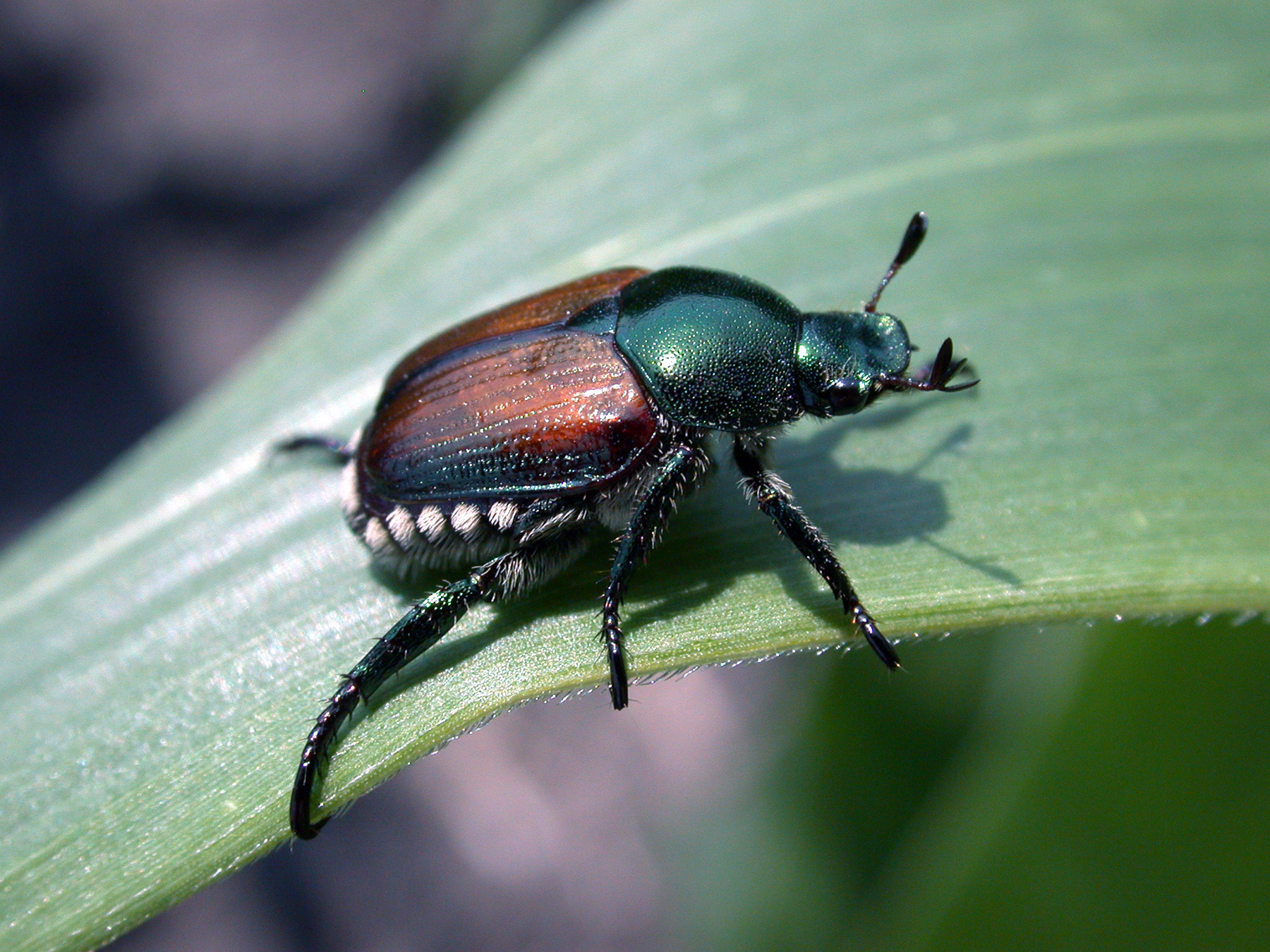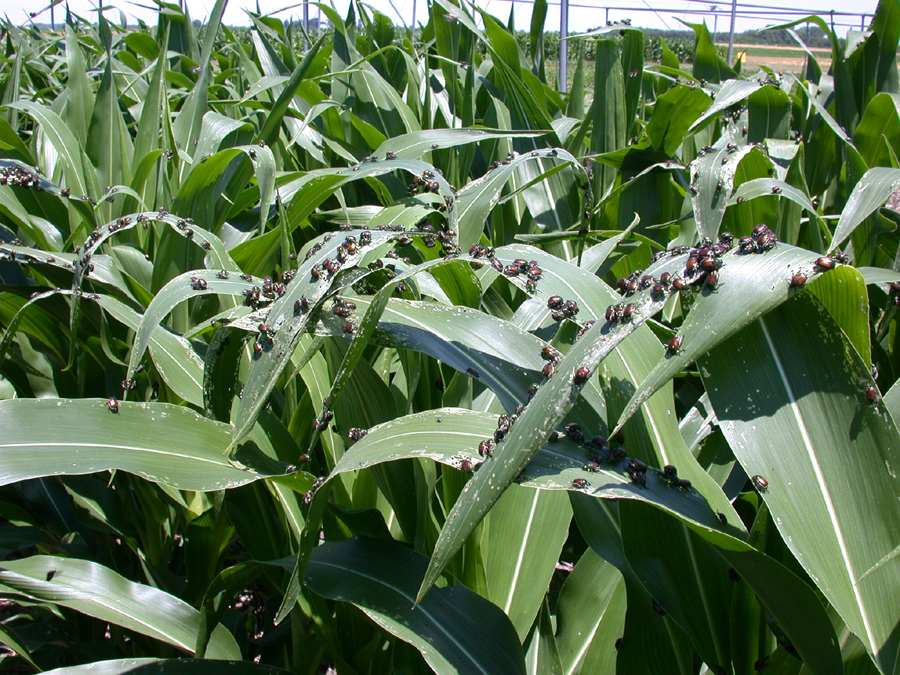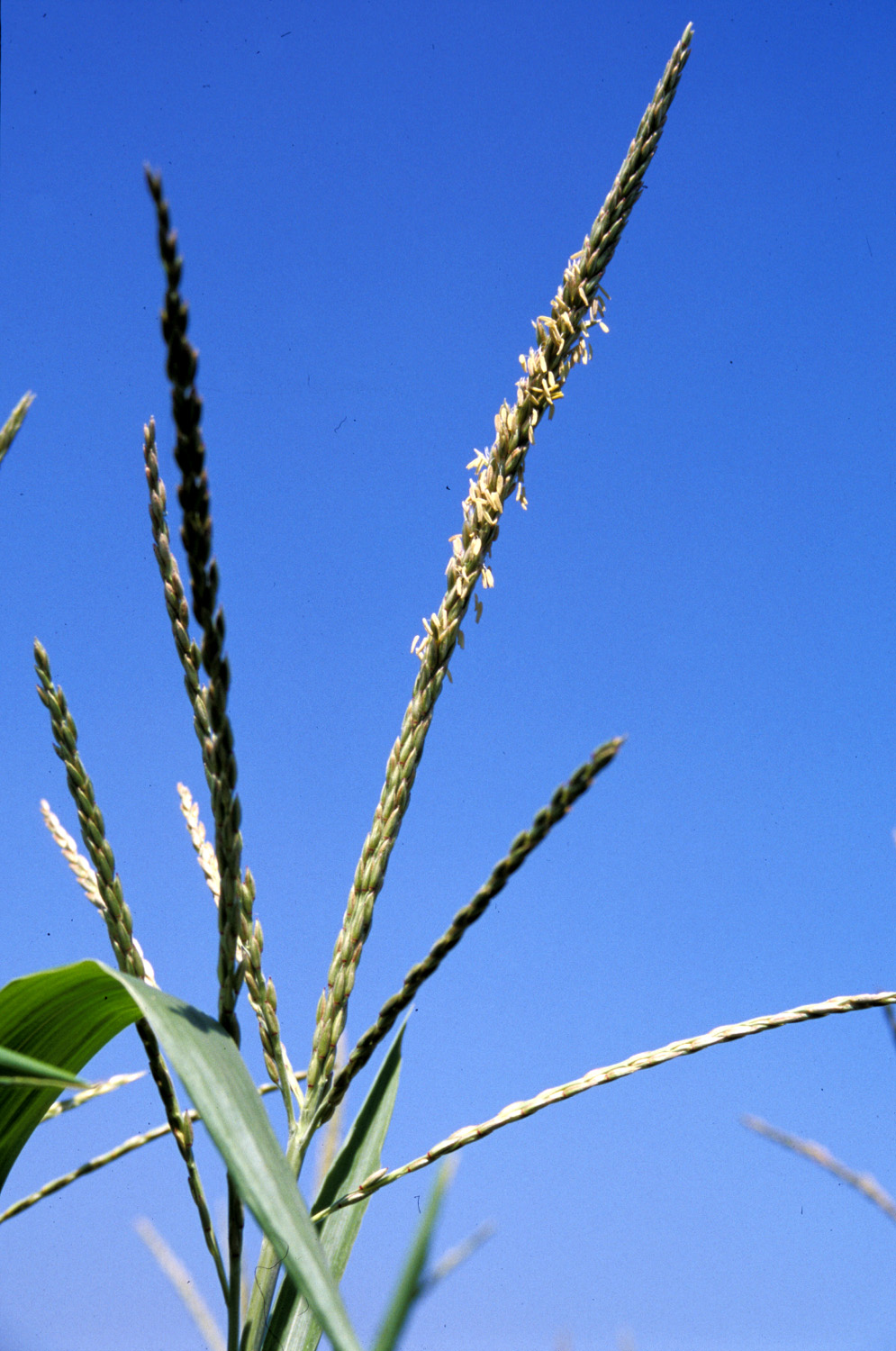Japanese Beetles (Corn)
Popillia japonica Newman
Search the Pest & Crop Newsletter

The ability to see these full-sized life-cycle images is currently disabled to resolve an issue.
Appearance and Life History

Photo by J. Obermeyer
The Japanese beetle is known to feed on over 250 different species of plants. They are especially fond of roses, grapes, smartweed, over-ripe and decaying fruit, soybean foliage, and corn silks.
The adult Japanese beetle is shiny metallic green with bronze-colored wing covers and is about 1/2 inch (13 mm) long. Along each side of the abdomen are six tufts of white hair. The larva is a large [1/2 to over 1 inch (13-25 mm) long] grub that may be easily confused with May/June beetle or masked chafer grubs.
Japanese beetle eggs are laid in the soil during July and August. The larvae hatch and pass through three instars while feeding on decaying vegetation and plant roots. The grubs overwinter deep in the soil, pupating in the early summer, and emerging from the ground as adults in late June and early July.
Damage
Adults pose a threat to corn during pollination. Beetles may clip back corn silks and prevent proper pollination of corn ears. Some leaf feeding may occur, causing damaged leaves to appear skeletonized or lacy. However, such leaf feeding injury is seldom of economic importance. See “White Grubs” for larval feeding and damage information.
Sampling Method During Pollination
- If Japanese beetles are noticeable in a corn field, determine the extent of the infestation – this pest is usually distributed in patches and will often be found only on field margins and/or weed patches.
- Check 5 randomly selected plants in each of 5 areas of the field for Japanese beetle adults, recording the numbers found on each plant.
- Estimate and record the length of silks remaining on each plant (e.g., 1/4, 3/8, 1/2, 5/8 inch, etc.), as well as the maturity of the silks (e.g., no silks, green silks, some brown silks, or all brown silks).
- Determine if pollen is still being shed by shaking the tassels of the 25 plants sampled.
- Determine the average number of Japanese beetles per plant, the amount of silk remaining, the maturity of the silks, and whether pollen is still being shed.
- Be aware that if corn silks are being clipped in a field where beetles are present, such damage may be a result of corn rootworm beetle feeding and/or Japanese beetle feeding. Check plants for rootworm beetles, as well as Japanese beetles.
Management Guidelines
Corn Insect Control Recommendations:
- Control may be advisable if silks are clipped back to less than 1/2 inch (13 mm) when less than 50% of the plants have been pollinated and Japanese beetles are still present and actively feeding.

Pollen develops in, and is dispersed from, the anthers of the tassel. Anthers emerge from the glumes on the tassel. Anther emergence, and subsequent pollen shed, usually begins in the mid-portion of the central tassel spike, then progresses upward, downward and outward over time. Pollen shed for an individual tassel typically requires two to seven days to complete, and one to two weeks for a whole field. (source, R. L. Nielsen)
Careful tassel inspection should help one determine the percent of pollen that has been released.




